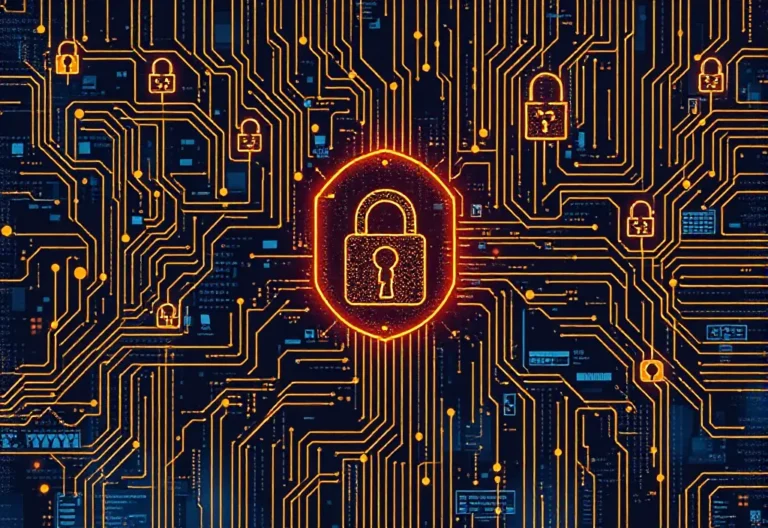Cybersecurity awareness

Cybersecurity awareness
Cybersecurity awareness training is a critical component of protecting your organization from threats like phishing, ransomware, and social engineering attacks. However, many businesses make the mistake of treating it as a one-time or annual event. While annual training is a good start, research shows that reinforcement is key to retaining knowledge and changing behaviors.
Why Is Cybersecurity Awareness Training Every 4 Months Recommended?
The recommendation to train employees on cybersecurity awareness every four months comes from a study presented at the USENIX SOUPS security conference . The research focused on how frequently employees needed training to retain their ability to detect phishing emails and other cyber threats effectively.
Employees were tested on their phishing identification skills at various intervals after their initial training:
- 4 months : Scores were strong, with employees accurately identifying and avoiding phishing emails.
- 6 months : Scores began to decline, indicating a drop in retention and vigilance.
- 8–12 months : Scores continued to worsen as time passed, highlighting the fading impact of one-time or infrequent training.
The study concluded that training every four months is the “sweet spot” for maintaining consistent cybersecurity awareness. This frequency ensures that employees retain knowledge, stay vigilant, and act as active participants in your organization’s cybersecurity strategy.
Why Regular Training Matters
Cybercriminals are constantly evolving their tactics, making it critical to keep employees informed about the latest threats. Without regular reinforcement, even well-trained employees can fall victim to scams like phishing, credential theft, or social engineering.
According to the 2021 Sophos Threat Report , many damaging cyberattacks stem from a lack of attention to basic security hygiene. For example:
- Weak passwords.
- Unsecured devices.
- Poor data handling practices.
Well-trained employees significantly reduce an organization’s risk. They become a proactive line of defense, preventing costly breaches and ensuring compliance with data privacy regulations.
Tips for Developing a Cybersecure Culture
The ultimate goal of cybersecurity awareness training is to foster a cybersecure culture —one where every employee understands the importance of protecting sensitive data, avoiding scams, and practicing good security habits. Here’s how to achieve that:
1. Mix Up Delivery Methods
Long, monotonous training sessions are less effective than varied, engaging approaches. Use a mix of methods to keep employees interested:
- Self-service videos : Short, informative videos emailed monthly.
- Team-based discussions : Roundtable sessions to discuss real-world scenarios.
- Security “Tip of the Week” : Share quick tips in newsletters or messaging apps like Slack or Microsoft Teams.
- IT-led training : Host sessions led by IT professionals to address specific topics.
- Simulated phishing tests : Conduct mock phishing campaigns to test and reinforce learning.
- Posters and visuals : Display cybersecurity reminders in common areas.
- Celebrate Cybersecurity Awareness Month : Dedicate October to special activities and training events.
2. Cover Key Topics
While phishing is a major focus, ensure your training covers a broad range of cybersecurity topics:
- Phishing by Email, Text, and Social Media
- Teach employees to recognize phishing attempts across multiple platforms, including email, SMS (smishing), and social media.
- Highlight red flags like suspicious links, unexpected attachments, or urgent language.
- Credential & Password Security
- Emphasize the importance of strong, unique passwords.
- Introduce tools like business password managers to simplify secure password management.
- Explain the dangers of reusing passwords across accounts.
- Mobile Device Security
- Train employees to secure their devices with passcodes, biometrics, or encryption.
- Stress the importance of keeping devices updated to patch vulnerabilities.
- Discuss risks like smishing, public Wi-Fi, and lost/stolen devices.
- Data Security
- Educate employees on proper data handling and storage practices.
- Ensure compliance with data privacy regulations like GDPR, CCPA, or HIPAA.
- Highlight the consequences of data breaches, including financial penalties and reputational damage.
3. Make It Practical and Actionable
Training should provide clear, actionable steps employees can take to improve their security habits. For example:
- How to identify a phishing email using the SLAM method (Sender, Links, Attachments, Message).
- Steps to secure their mobile devices.
- Best practices for creating and managing strong passwords.
Building a Strong Security Culture
A cybersecure culture doesn’t happen overnight—it requires consistent effort and leadership buy-in. Here’s how to build momentum:
-
Lead by Example
Leaders should model good cybersecurity practices, such as using strong passwords and reporting suspicious activity. - Recognize Good Behavior
Reward employees who demonstrate strong security habits, such as passing phishing tests or reporting potential threats. - Encourage Open Communication
Create an environment where employees feel comfortable asking questions or reporting security concerns without fear of judgment. - Measure Progress
Track metrics like phishing test success rates, incident reports, and employee feedback to assess the effectiveness of your program.
The Bottom Line
Training employees on cybersecurity awareness every four months ensures they retain knowledge, stay vigilant, and contribute to a culture of security. By combining regular training with engaging delivery methods and practical advice, you can empower your team to protect your organization from evolving cyber threats.
If you’re unsure how to design or implement an effective cybersecurity awareness program, let us help. Our team of experts can create a customized, engaging training plan tailored to your organization’s needs.
Contact us today to get started and turn your employees into a strong line of defense against cyberattacks.





